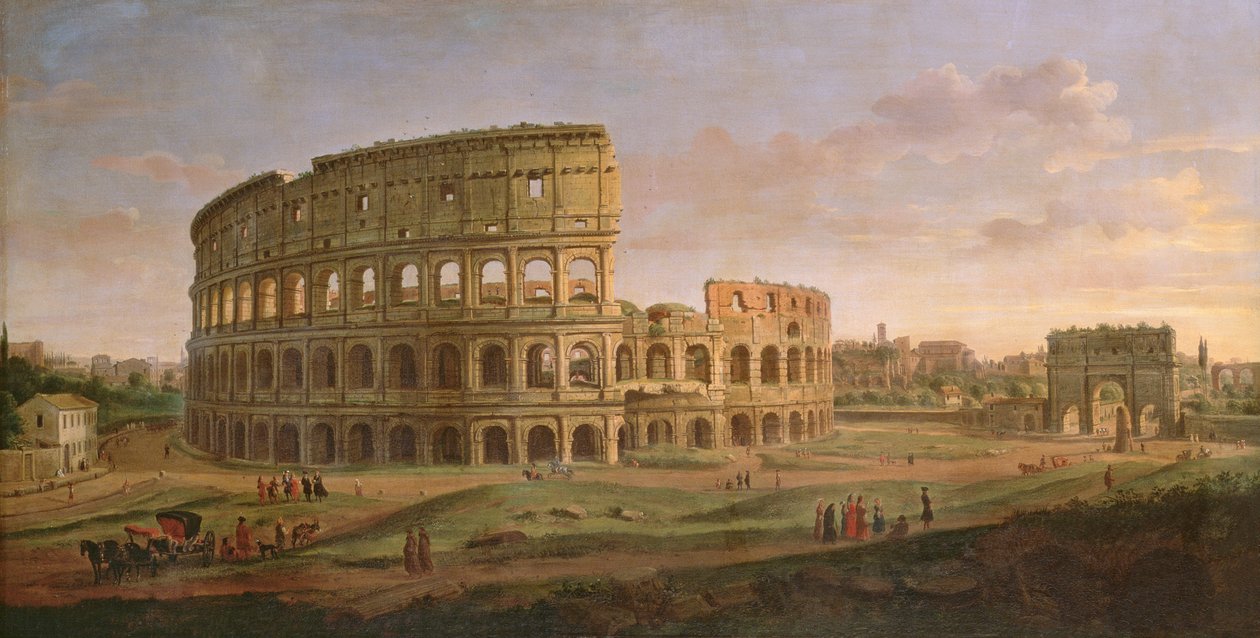
Casper van Wittel, born and trained as a painter in the Netherlands in 1652, emigrated to Italy in the late 1670s where he remained until his death in 1736. Known for his landscapes, van Wittel was a popular artist of the times and his paintings provide a record of how Rome looked before its transformation, beginning in the late 19th century into the metropolis it is today. I've written before about van Wittel. Of note, it was only around 1900 that Rome regained the same population it had in the second century AD. For more on what happened between those times read Belisarius Enters Rome.
This painting depicts the Colosseum, built in the 70s AD and the area around it. It is a bucolic scene. In other paintings of the amphitheater, van Wittel depicts sheep grazing next to the remains of the monumental structure. On the right is the Arch of Constantine, constructed 315-20. In front of it is the mysterious, and stubby, Meta Sudans which existed until it was destroyed during Mussolini's dictatorship in the 1930s. In the far distance behind the arch to the extreme right is the aqueduct that brought water to the Palatine Hill where the emperor's palace was located. The severing of the aqueduct in the 6th century meant the abandonment of the Palatine.
The perspective of the painting is from the lower part of the Esquiline, one of the seven hills of Rome. To the left of the artist would be the ruins of Trajan's Baths. In the Meta Sudans post there is an 1890 photo showing some of this area. Looking to the right of the Arch and aqueduct, this 1850 photo, taken from the Colosseum provides a view of the Palatine which would have been very similar to what van Wittel would have seen a 150 years previously.
No comments:
Post a Comment